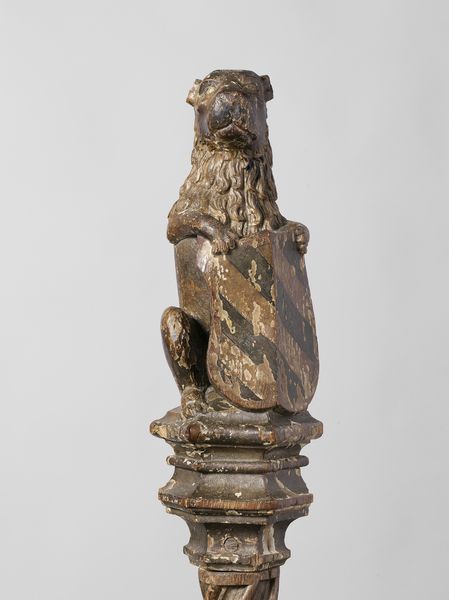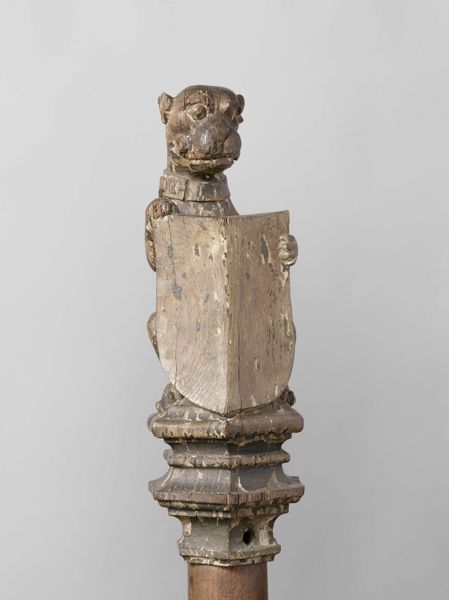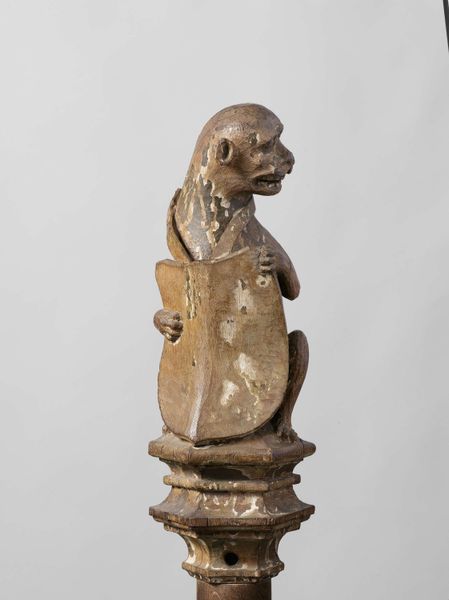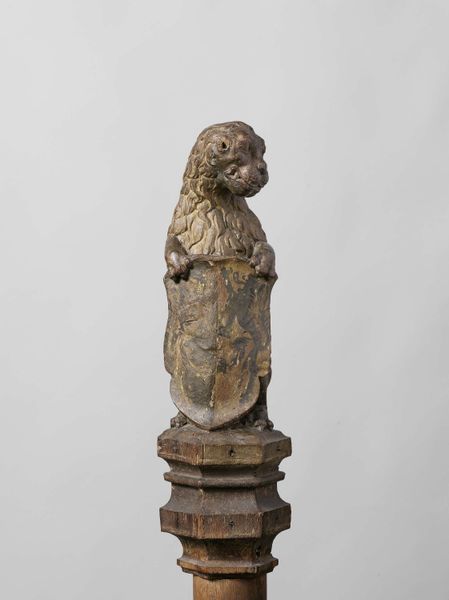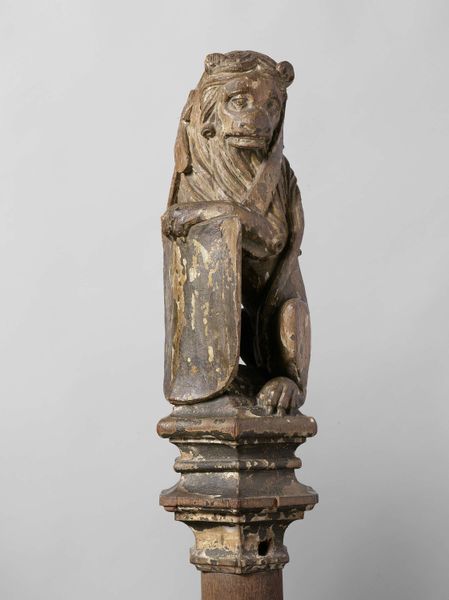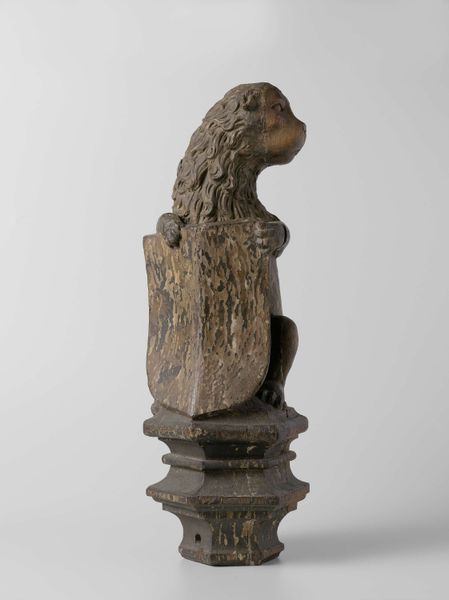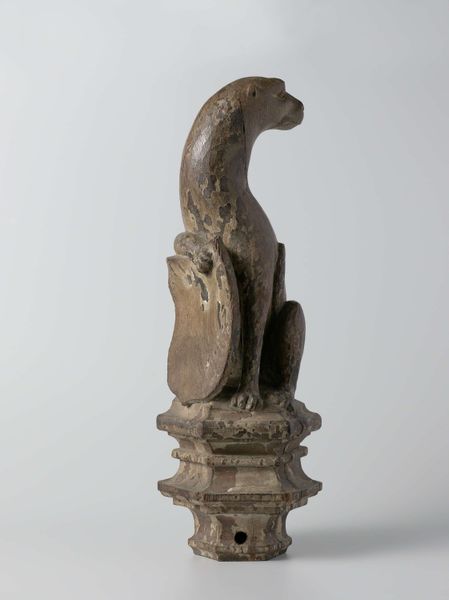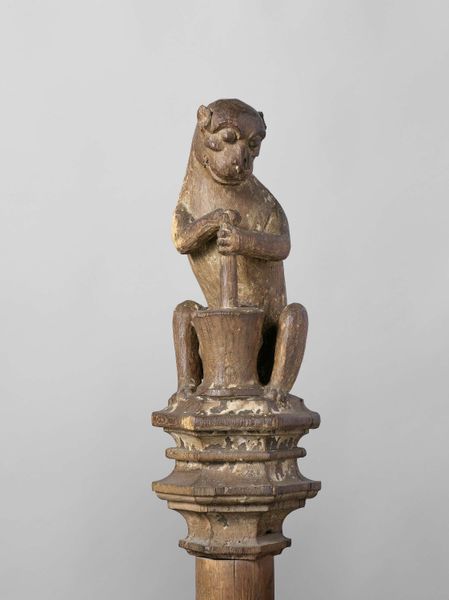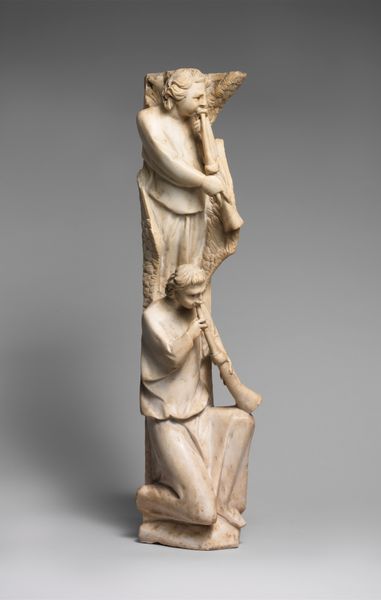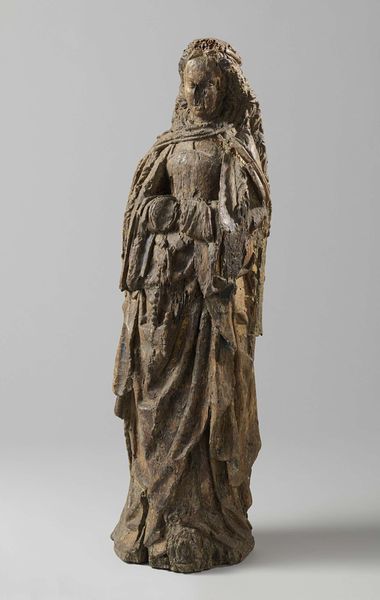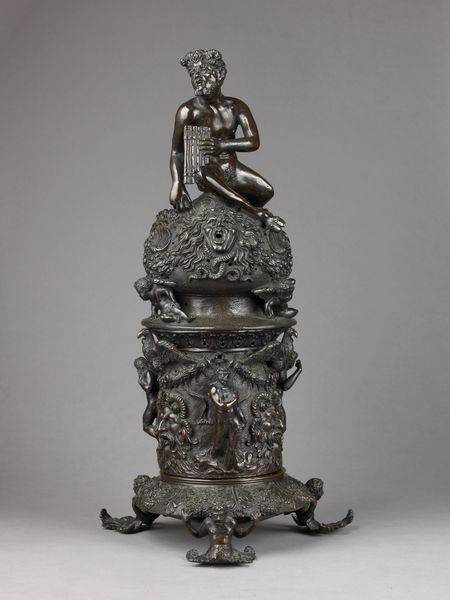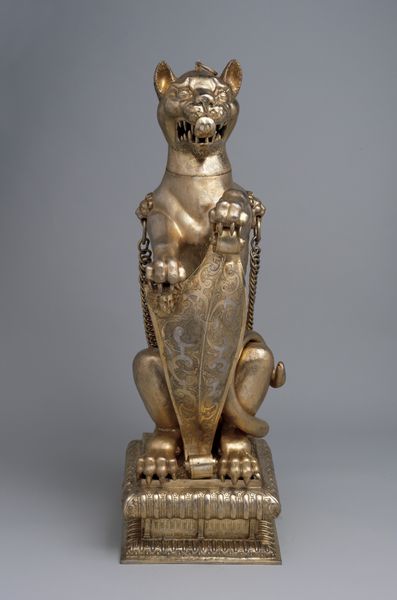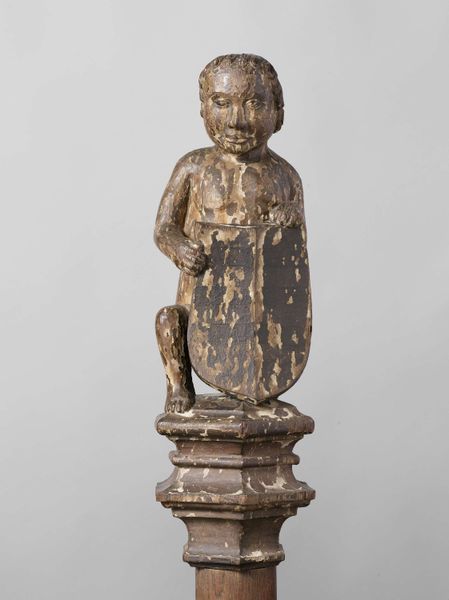
Dog Supporting an Escutcheon, from the Top of a Balustrade or the Backrest of the Stadholder’s Chair in the Rolzaal in the Hof van Holland, The Hague 1511
0:00
0:00
carving, sculpture, wood
#
medieval
#
carving
#
sculpture
#
sculpture
#
wood
Dimensions: height 55.5 cm, width 17 cm, depth 17 cm
Copyright: Rijks Museum: Open Domain
Editor: Here we have a wooden sculpture titled "Dog Supporting an Escutcheon," made around 1511 by Joost Janszoon. It’s incredibly charming, yet it has an odd weightiness. How do you interpret its significance? Curator: This piece is fascinating when viewed through the lens of social hierarchy and the performance of power in the early 16th century. Dogs, especially those associated with noble houses, often symbolized loyalty and guardianship. What do you notice about the escutcheon the dog supports? Editor: It’s worn and blank, almost like a placeholder. Curator: Precisely. The emptiness becomes a powerful statement. It invites questions about who had the right to claim power and how those claims were visually represented. It also makes me think about what's absent, whose stories aren’t being told in these halls of power? Consider that this piece adorned the Stadholder's chair; imagine who was *not* permitted to sit in that chair, to wield that power. Editor: That shifts my perspective entirely. The dog is no longer just cute, but becomes a complex symbol of inclusion and exclusion. Was this type of symbolism common? Curator: Yes, the use of animals as allegorical representations of social status, virtue, or vice was common. What's interesting here is the juxtaposition of the familiar, domesticated dog with the heraldic function normally reserved for more 'majestic' creatures, maybe like a lion or an eagle. Think of how artists used animals to both uphold and subtly critique power structures. The choice of dog might not only reflect loyalty, but a need to project that quality. Editor: So it prompts a conversation around the very notion of authority? Curator: Exactly. It's a constant negotiation, an argument about how authority is constructed, maintained, and even undermined through art. This piece then encourages us to analyze similar power dynamics still present today. Editor: I see the work, and the role of art history, very differently now. Thanks! Curator: My pleasure. Always remember to ask: Whose interests does a work of art serve, and whose voices are being marginalized?
Comments
No comments
Be the first to comment and join the conversation on the ultimate creative platform.
